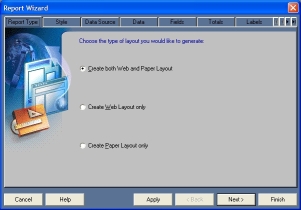- Details

Today i set up a test-environment to play around, and after a database-clone attempt failed i had to do it with an logical exort, means a datapump in 10g. So i did it by using the Enterprise-Manager (10.2.0.2) and did a full-export that worked fine. The import failed with ORA-06502 (numeric or value error) and no further error-message. After setting the NLS-language and also the browser-language from German to English, the import worked fine. Seems to be a problem with the language...
- Details
Opatch is a tool for applying one-off-patches for oracle-products, that means if you are running in bug xy the the support will tell you to apply the patch 08154711...
In my case a found a metalink-note that could solve my problem, guess what... YES i had to apply a patch... It took me a lot of time to find the download-page for opatch. The note described exactly what opatch is doing, referred to a lot of other notes....
So here is the shortcut directly to the opatch-download-page:
http://updates.oracle.com/download/2617419.html
By the way, you need an valid metalink-account for that link
- Details
Migrating from a pfile to a spfile is really simple. You can use the following command on the console:
CREATE SPFILE FROM PFILE = 'C:\oradata\mydb\init.ora'
... of course you have to enter the right path to the init.ora file... 
To do it the other way is also possible, just type
CREATE PFILE = 'C:\oradata\mydb\init.ora' FROM SPFILE = 'C:\oradata\mydb\spfilemydb.ORA';
- Details

In my current project a lot of customers are from east-european countries. For this reason the reports (printed as PDF) need to be printed with a lot of special characters, also cyrillic ones. For this reason i have to use UTF8. In Reports it is a almost simple procedure to configure. The hard part is to find the right documentation, there is a huge amount of whitepapers etc. floating around on metalink and OTN. Here in some simple steps, this example works with Windows-XP.
- check where the fonts are located on the operating-system (f.e.: "c:\windows\fonts")
- find the file uifont.ali file (should be in ...oracle...\tools\common....)
- add a pdf subset-section or uncomment it (there are a lot of examples in this file)
example:
[ PDF:Subset ]
"Times New Roman"..Italic.Bold.. = "timesbi.ttf"
"Times New Roman"...Bold.. = "timesbd.ttf"
"Times New Roman"..Italic... = "timesi.ttf"
"Times New Roman"..... = "times.ttf"
"Arial"..Italic.Bold.. = "Arialbi.ttf"
"Arial"...Bold.. = "Arialbd.ttf"
"Arial"..Italic... = "Ariali.ttf"
"Arial"..... = "Arial.ttf"
- add the font-directory to the Reports-Path the reports-path is a registry-entry on windows and a environment-variable on linux/unix.
- If it is a local installation for developing, you also have to set the nls-language to UTF8 (registry in windows, environment on linux/unix...)
Done.
If you want to learn more about PDF-subsetting take a look at the documentation, the document-number for 10g Developer is B13895-01, you can download it on metalink, or just google for it.
- Details
![]()
Do you like the SPFILE or are you using the classic init.ora for changes in the Oracle-Environment like sga-parameters? ![]()
I like SPFILES more than the text-parameter-files. The advantage of a text-parameter file (init.ora) to the server-parameter-file (spfile) is that you can read it with a simple editor. The disadvantage is that you had to restart the whole instance to change sga-parameters, but also more simple parameters like SMTP_OUT_SERVER. With SPFILE you can do this with an running instance by typing for example: alter system set smtp_out_server='mail.xyz.at' scope=spfile;
If you are using Oracle-Failsafe Failsafe is not capable to use spfiles, and that's a annoying thing if you are used to it. But there is a workaround. Create a text-parameter-file (the best would be on the shared cluster-disk) and point it to the spfile by using the SPFILE Parameter.
Your text-parameter-file would look similar to this: spfile=h:\oradata\spfileprod.ora
- Details
If you need to verify phone number or other fields, and you want to ensure that not all characters can be used, the best is to use a check-constraint. The following constraint is simple, and fast 100 times faster than using a pl/sql-function (tested with 2mio records) because it is used directly on the table and there is no switching between the sql and pl/sql-engine. 
alter table customer add constraint ck_phone_numeric check ((RPAD(TRANSLATE(phoneno,'0123456789+-X','XXXXXXXXXXXXa'),20,'X')='XXXXXXXXXXXXXXXXXXXX'));
You have to replace the length of the column (in this case 20) to the length of your column and of course the table name...
- Details
Webutil is an enhancement of Oracle Webforms. A Toolbox where you can do things like reading the registry, transferring files by ftp, invoking dll-functions...
Last time when using it i got WUC-024 (WUC-24), i think i used the filetransfer-functions.
... I am a brave user so i am consulting the manual (RTFM). The manual reads
The error is caused by wrong/missing configuration.Solution: No mapping has been made for webutil directory where files are located.
Follow description from WebUtil User’s Guide chapter 2.5 "Configuring Oracle HTTP Server for WebUtil" to set up correct mapping.
But guess what.... that was not the problem everything configured fine, i simply had not set the proxy-server in the jinitiator...
I like misleading Oracle Error-Messages... 
- Details

So what happened to my Oracle Service Request?....
Oracle found a similar bug reported. So i told them that i can live with my workaround and that they can close the SR if they give the Development-guys the infos from this Service-Request.
Some weeks later i did installed failsafe on a different server, and guess what.... i did not have this problem again.....
My workaround:
Enable Database trace (exec dbms_monitor.database_trace_enable;)
check for which view is needed, you will find the output of the trace in the udump-directory (select value from v$parameter where name = 'user_dump_dest')
create a synonym for this view (create synonym v$controlfiWHATISLOOKEDFOR for v$controlfile;)
Don't forget to disable the Database trace by invoking DBMS_MONITOR.database_trace_disable.
- Details
If you want direct access to the database without defining a TNSNAMES.ORA you have to be on the same machine as the database is installed. Just try the username/pwwithout the connect-string ("sqlplus system/manager" instead of "sqlplus system/manager@testdb".
If you get an ORA-12560 TNS:protocol adapter error, the ORACLE_SID environment variable does not seem to be set set it with "SET ORACLE_SID=yourdbsid" in Windows or "export ORACLE_SID=yourdbsid" on Linux/Unix. Hope it helps... 
- Details

There is something wrong..... I installed the new version of failsafe and could not add a Database, because of ORA-00942 "View or Table does not exist". So i checked by enabling the database trace (in the DBMS_MONITOR Package) and looking for the SQL-Statement in the dump-directory of the database.
Failsafe is looking for a table "v$controlfiO" in another installation for "v$controlfif", thought v$controlfile was meant and created a public synonym for it ("create synonym v$controlfiO for v$controlfile;") after this it worked. I will log a Service Request for this issue...
- Details
If you are testing or working with the Oracle Enterprise Manager, and you are hitting the error-message "Connection to host as user Administrator failed. Bad SQL_SCRIPT at - line 227." when trying to define a backup, your Configuration for the Database has an error. This error means that a file or script in the configured directory can't be found.
The reason is that the database has a wrong not existent oracle-home defined you can check it if you go in the Oracle-Enterprise-Manager Console to "Targets" and choose the Tab "Databases" there choose your Database and press the button "configure". You will see that there is a wrong directory defined. If it can not be changed for any reasons a workaround would be to copy the Oracle home to the directory that the EM expects or define a link to this directory.
- Details
Yesterday I posted an article about failsafe and forgot to tell you that it does NOT just take care of the Oracle Databases, it can also take care and failover your Oracle Application Server and you Oracle Agents for your Enterprise Manager.
Take a look at the Product-Infos.
- Do you know Oracle Failsafe???
- REP-56055: Exceed max connections allowed
- Troubles with OracleDataSource
- Enterprise Manager clone Database results in "insufficient disk space"
- How to distribute Oracle Reports Part II
- How to distribute Oracle Reports Part I
- No valid GPS-Signal on Acer N35
- How to use a terminal-file in webforms
- ORA-00257 ORA-16020 Archiver Stuck
- ORA-39002 ORA-39070 ORA-39087 with Datapump
- Installation Forms and Reports Service failed
- Simple Machine Forum
- Don't use timers in webforms - WHY NOT?
- The difference between PJC and Java Beans in Forms
- Forms and Reports Services Standalone
- ORA-00932: inconsistent datatypes
- Compare Database Performance
- Scott and Tiger
- Surprise Surprise Oracle Developer Suite 10gR2
- Working with Oracle Express Edition
- Oracle Express - an Oracle-Database that's for free